Ever since I got introduced to the joys of Minesweeper by Girl_DM_ I've been having a lot of fun playing it as a little timewaster. I'm specifically playing the version from Simon Tatham's lovely Portable Puzzle Collection (more specifically the Android port via F-Droid) which unlike the original Minesweeper does NOT require guessing. Most of the time, I'm well-versed enough in patterns and testing candidate solutions that I'm able to clear a 16x16 board with 99 mines in about 3-5 minutes. But on a fairly regular basis I'll run into situations where I get stuck and it seems like I'd either have to calculate an inordinate amount of possible solutions or just make a random guess, neither of which are appealing. Here's one such example:
with annotations
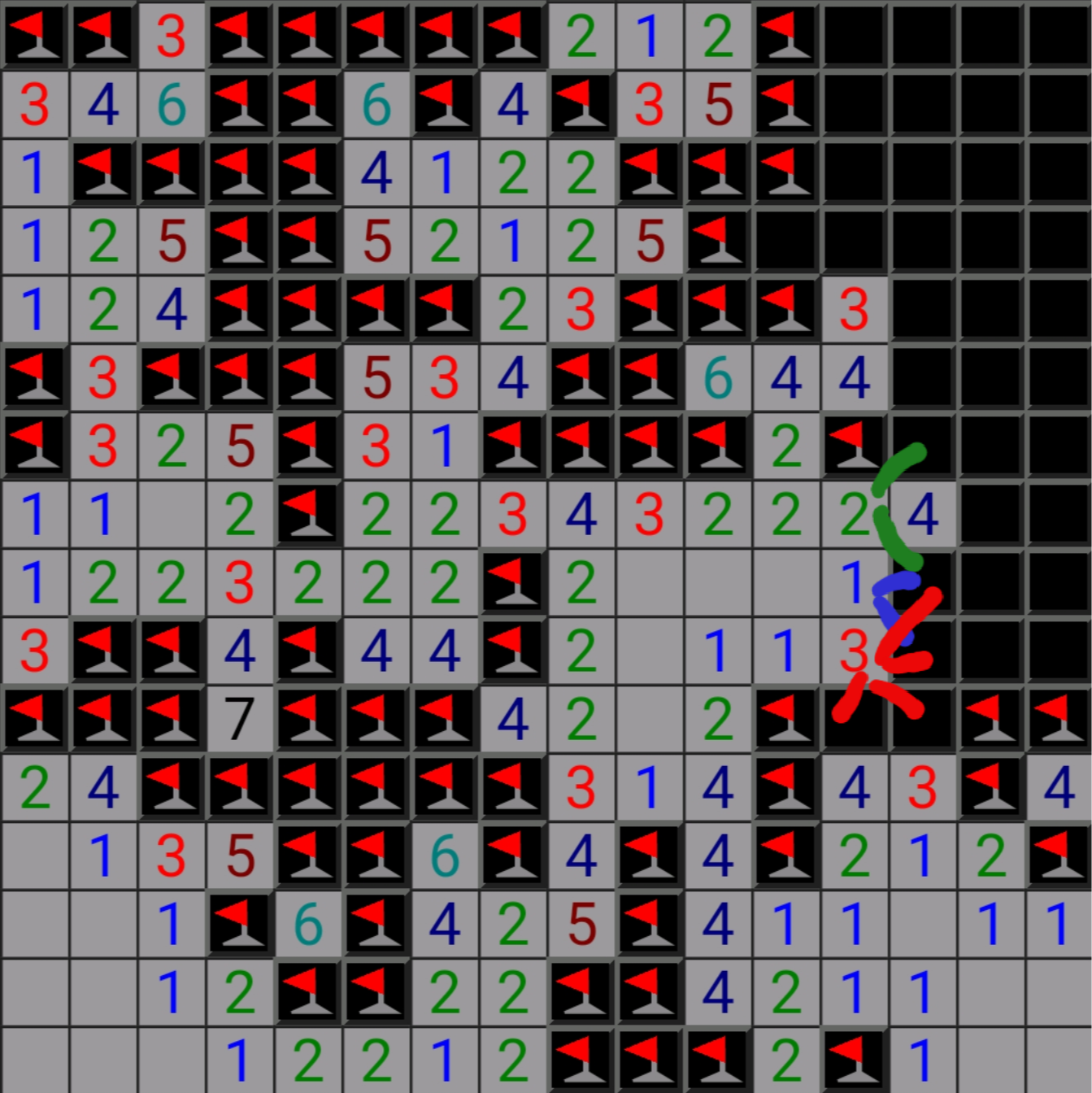
without annotations

There's probably some cool Minesweeper shorthand I could use to describe the constraints, but what I tried to show with my annotations is how I understand that, for each of the annotated squares, there is a mutually-exclusive binary choice (or in the case of the 3, two choices) for where a mine could be located. Unfortunately, as far as I can tell, while the choices are internally mutually exclusive, it doesn't seem like there's any permutation of those choices that is invalid so I can't eliminate any possibilities. My usual strategy is to fix one choice and see if it results in a contradiction. For instance, if the other mine for the 2 is the upper choice, we can clear the lower square. That means the lower square for the 1 must be a mine, and this still leaves either of the two bottom choices as valid for the 3 (so this is a possible configuration based on these constraints).
The only remaining sections have a lot of freedom which makes them daunting to analyze. Of the remaining unanalyzed squares, from top to bottom they have 2, 2, and 3 mines remaining, respectively, which is quite a lot of options to fully check, and I can only eliminate a few heuristically (e.g. the top 3 must have at least one mine in either the east or southeast space, since otherwise the 4 to the south can't be fulfilled; the 4 must not have the remaining mines all in the east column because otherwise the 2 and 1 can't be fulfilled). I'm sure if I went through them methodically I would eventually arrive at an answer, but that's pretty tedious, so I usually just give up and generate a new board in this kind of situation.
TL;DR: am I missing some neat heuristic(s) that will allow me to either slash the possible solutions to a more manageable number or eliminate individual solutions very quickly, or is this kind of difficult spot just an inevitable outcome for some boards?
- Show
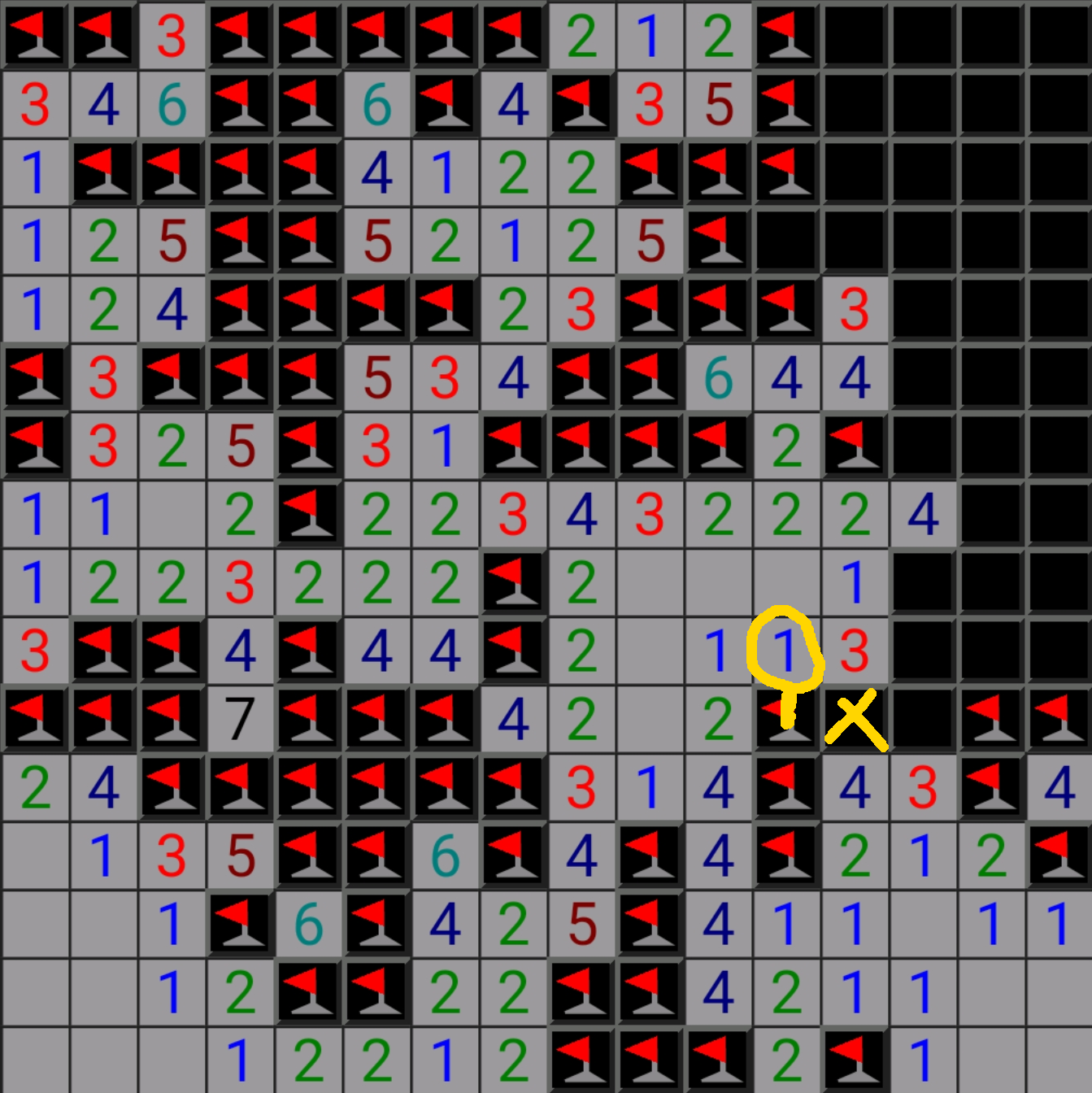
You can clear the cell marked with the X since the 1 is satisfied by the flag below it.
...well that's embarrassing

Thank you though! If you don't mind, I've got a few more for you. First one's another one where I felt stuck (9 mines remaining, if that helps), second is more just a little overwhelming and I couldn't figure out a good place to start:
Show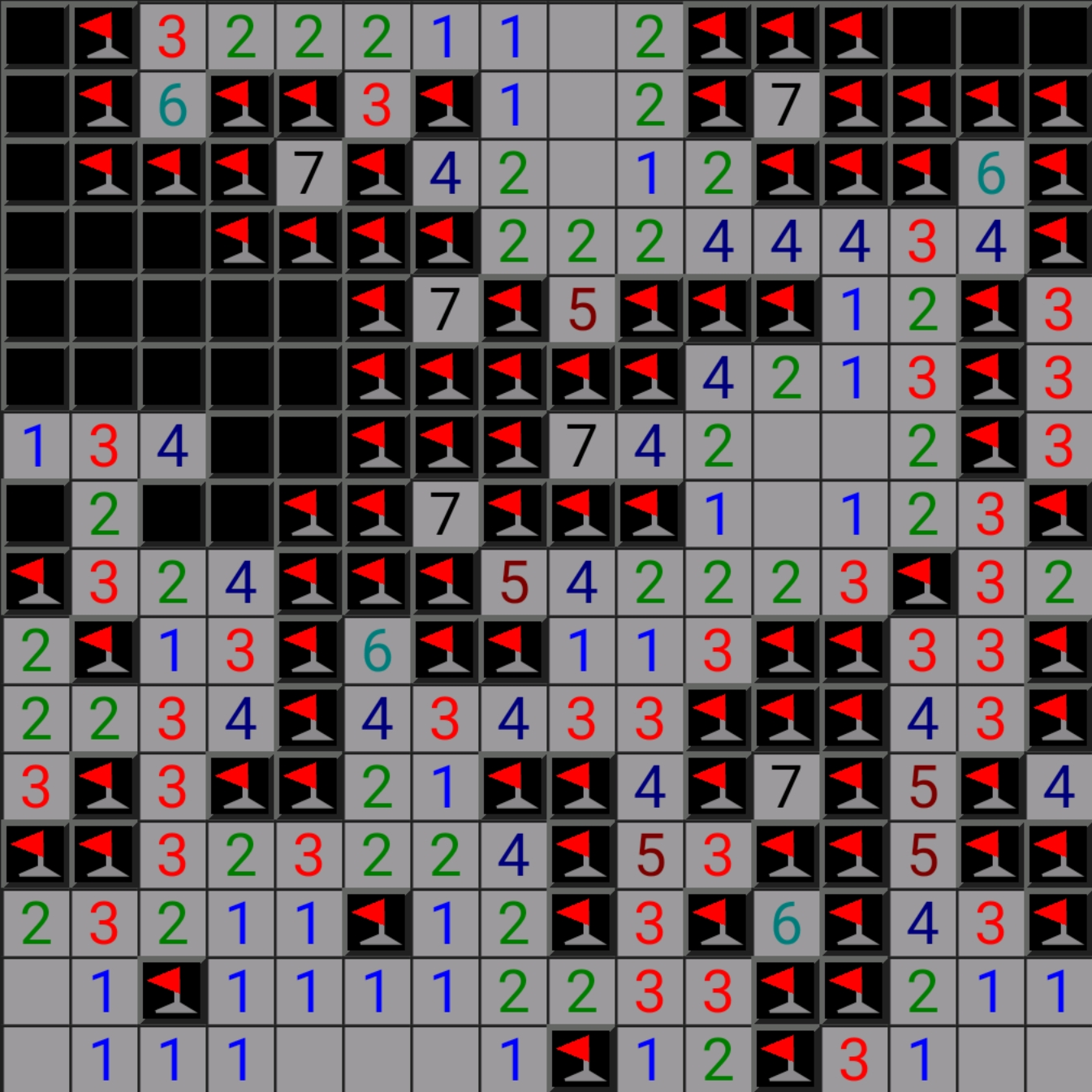 Show
Show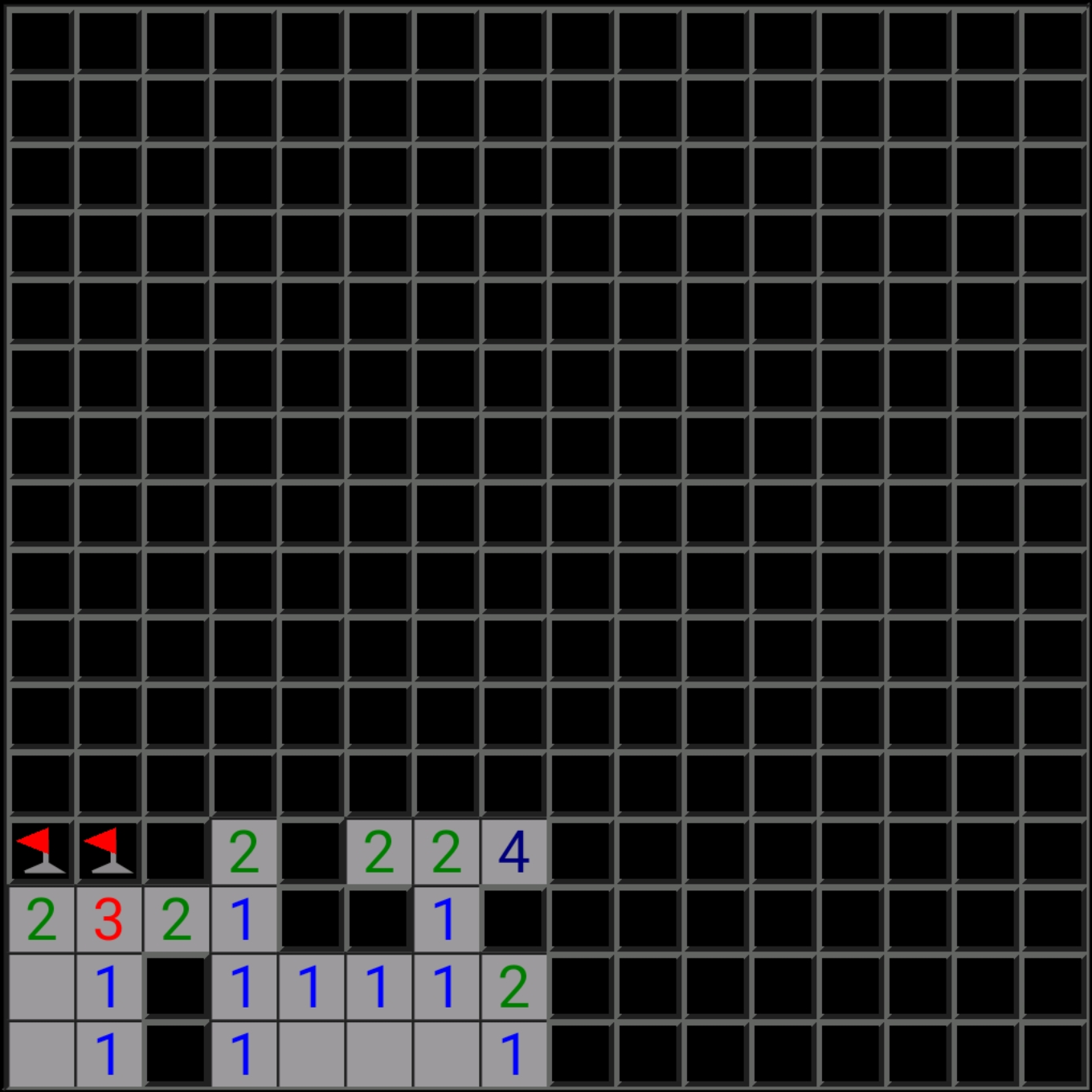
I actually didn't realize it until looking over the two screenshots, but they both have a pattern that I dread: a T-shaped clearing surrounded by unflagged spaces. Outside of a few specific scenarios with easy solutions (e.g. 5 at the top) it's something I struggle with a lot, and I wonder if there are any specific heuristics that help in dealing with them beyond "clear stuff nearby until you no longer have a T."
edit: just figured out the first one (southwest of upper 3 can't have a mine otherwise the upper 3 can't be fulfilled) which allowed me to solve the rest in like 20 seconds:
Show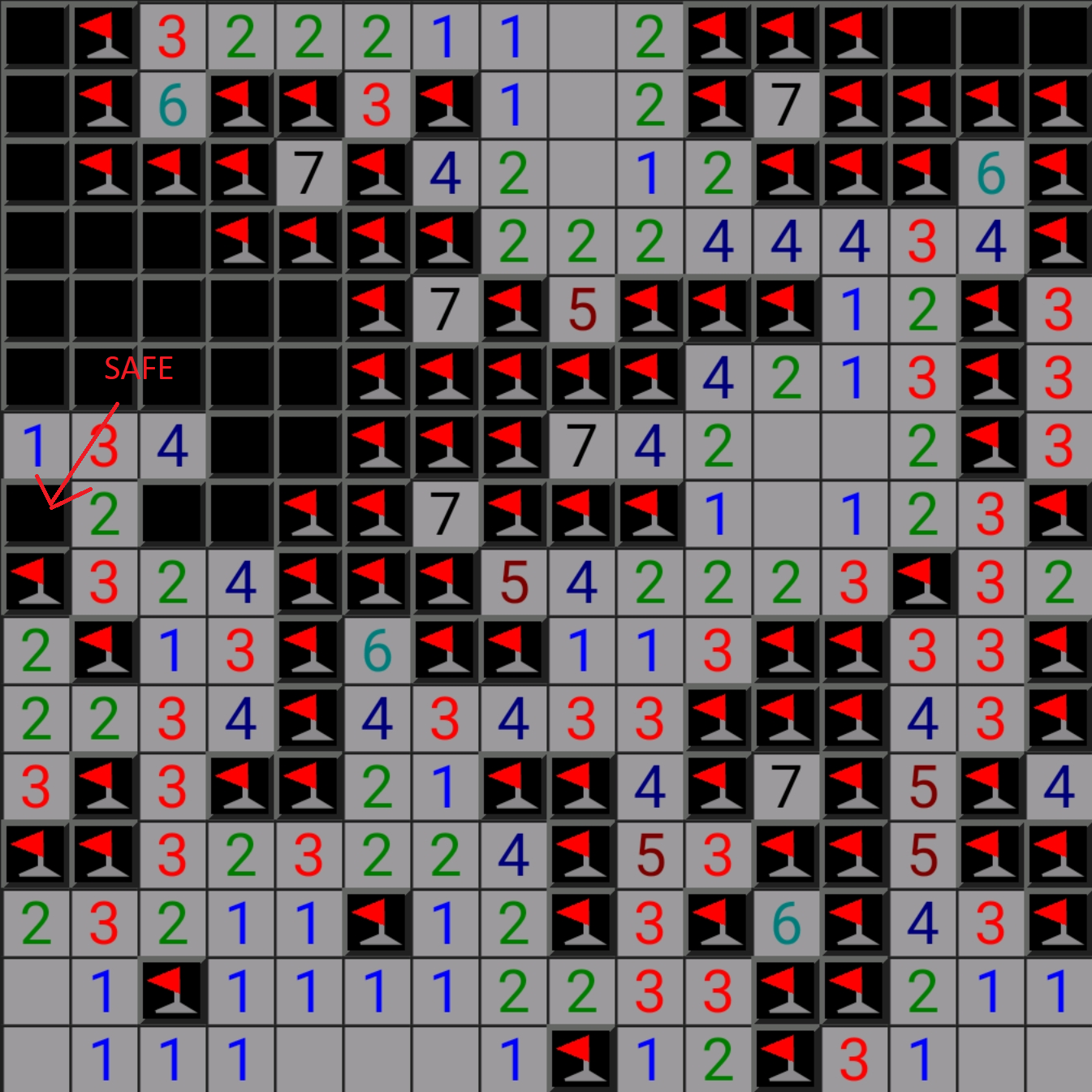
but would still love some pointers for the second one!
I found a YouTube link in your post. Here are links to the same video on alternative frontends that protect your privacy:

